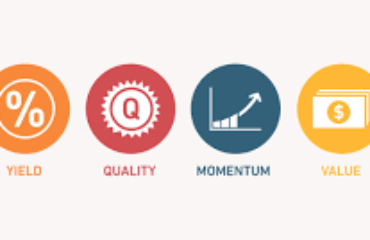Like in many other markets, the mutual fund industry the world over seems to have a dazzling choice of products, but with the top few dominating assets under management and inflows. In the US, there are more funds than stocks. Even in a nascent market like India, there are more than 1,000 choices, and that’s not counting alternatives, portfolio management services or structured products. So the question is why do so many products exist. And how can advisers and investors make sense of them.
Why are there so many products?
The availability of products is basic economics. Financial firms like banks, investment banks and securities firms are attracted to asset management because of its annuity revenue. Asset management offers healthy and stable profits.
Firms also need to have capability – they need to have a differentiated and superior investment strategy that will outperform the market benchmark and peers. What’s a superior strategy? There are investors, like Warren Buffett, who swear by a simple bottom-up stock-picking approach and there are others, like George Soros, who made their fortunes by making massive top-down macro calls. How can both, diametrically opposite strategies, be right? There is no right…investment management is not a science like physics. Whatever works in the long term is right…though firms believe whatever works in the short term, based on spurious back-testing is fine. And since there is no one ‘right way’ to manage money, they convince themselves and others that they have a differentiated capability.
Then, there is marketing. Firms develop a marketing strategy that involves higher incentives to distributors and an interesting story – usually after the theme has already played out in the real economy. Think the dotcom boom, the China effect on commodities, the mobile revolution etc. For every theme, firms need to launch products for investors to lose money on.
The end result is there are too many investment products.
A simplifying lens
Of course, firms put the plethora of products to investors as ‘giving them choice’. And to be fair, investors want choice. Indeed, there is a whole field of study on how much value humans place on choice. When we don’t have choice, we want it. Once we have it, we don’t know how to choose.
As a researcher, I have spent my career, advising advisers on how to choose. And it’s not as simple as it looks. A research house has to develop a ‘simplifying lens’ to sift through the thousands of products available. This simplifying lens is basically their framework. It covers very high-level concepts to the detailed processes.
The most profound concept a research house, and for that matter any firm who advises on investments, has to develop is an investment philosophy. An investment philosophy covers questions like – Do we believe markets are efficient or inefficient? If the latter, how can one take advantage? Do we have a sustainable competitive advantage to keep adding value above the market?
We also have to define which market. Why do we differentiate between equity and debt? Because they are fundamentally different, although one needs to study the current financial position and prospects of the investment for both.
You can divide these into further two – debt can be short term called cash or long term (more than 12mths) called fixed interest. Equity is usually an interest into a business, but can also be into a property.
However, defining asset classes beyond this basic classification is a grey and arbitrary process. You can divide asset classes into further categories based on –
- Risk, including real risks such as credit risk or business risk, or market risks (fixed interest could be divided into government debt, investment grade corporate debt, high yield debt, equities could be divided into large cap and small cap etc
- Geography, which could be global, regional, country-specific (equities could be divided into domestic equities, international equities, emerging market equities etc),
- Liquidity (equities can be divided into listed equities, private equity),
- Focus, which could be broad-based or sector-specific (equities could be divided into large cap and small cap etc, or into industrials, resources, REITs etc)
Beyond these ‘traditional’ asset classes, there is a catch-all term called ‘alternatives’ which is not really an asset class but a collection of illiquid sub-asset classes and interesting strategies.
While investment experts call these asset classes, the general public (and sometimes even industry people) refer to structures as asset classes. To them, the asset classes are –
- Direct – where investors buy securities directly, with or without help from brokers
- Managed – where investors give discrentionary mandates to their brokers or asset management companies
- Funds – where investors invest through trust or company structures
- Structured – where investors invest through bespoke contracts, sometimes leveraged, usually with investment banks
Using the simplifying lens
Based on the above very high-level framework, we can classify products into the following table –
| Asset class/Structure | Direct | Managed | Fund | Structured |
| Cash | ||||
| Debt | ||||
| Real Estate | ||||
| Equity | ||||
| Alternative |
The next step is to research the asset class, including the economic drivers of returns, risks, conducive environments etc. Forecasting returns, risks and correlations over the next few decades is not simple. Researchers also have to select or construct appropriate benchmarks as proxies of the ‘market’ for that asset class. While market-capitalisation weighted indices have been the accepted norm, there is constant debate on this.
After all this basic groundwork, the simplifying lens can be used to classify the thousands of products into the table and the ‘manager/fund research’ work begins. Now the focus shifts to figuring whether the broker or fund manager has any skill to add value to the market return, and what the appropriate fees for that skill should be. This is even harder than forecasting asset classes; there are no fundamental drivers to skill. You need good experienced analysts to identify other good analysts; the problem is the economics of fund research is not good. A discussion for another day.
Conclusion
The availability of products in a market is a sign of maturity of that market. So long as the economics are good, there will be an incentive for product providers to continue launching more products providing healthy competition.
However, to balance the plethora of products, we need availability of good research. A good research framework and process can sift through the maze of products and help advisers and investors with choice architecture. Advisers, of any type or business model, need to have research capability and the right incentives. Only when this happens, will investors benefit from the healthy competition that choice is meant to bring.





You must be logged in to post a comment.